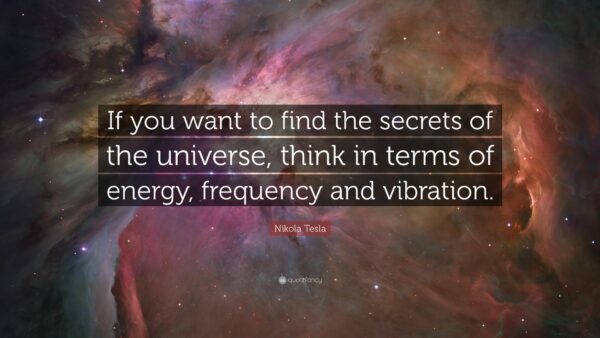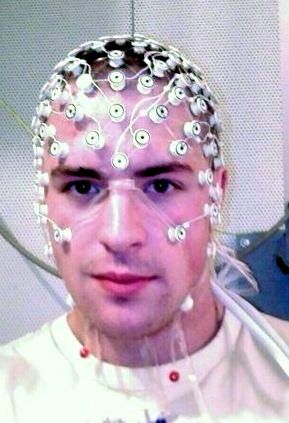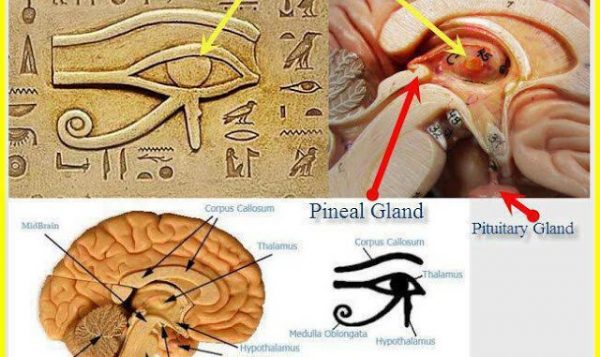
Re-Programming Your Subconscious Mind:
Could music, and an understanding of your brain waves extend your life?
WHAT ARE BRAIN WAVES?
At the root of all your thoughts, emotions and behaviors is the communication between neurons within your brain. Brain waves are produced by synchronised electrical pulses from masses of neurons communicating with each other. Brain waves are detected using sensors placed on the scalp. They are divided into bandwidths to describe their functions (below), but are best thought of as a continuous spectrum of consciousness; from slow, loud and functional – to fast, subtle, and complex. It is a handy analogy to think of brainwaves as musical notes – the low frequency waves are like a deeply penetrating drum beat, while the higher frequency brainwaves are more like a subtle high pitched flute.
You are like a symphony, the higher and lower frequencies link and cohere with each other through harmonics. Your brain waves change according to what we’re doing and feeling. When slower brain waves are dominant you can feel tired, slow, sluggish, or dreamy.
The higher frequencies are dominant when you feel wired, or hyper-alert. The descriptions that follow are only broad descriptions – in practice things are far more complex, and brainwaves reflect different aspects when they occur in different locations in the brain.
Your brain wave speed is measured in Hertz (cycles per second) and they are divided into bands delineating slow, moderate, and fast waves.
Dr. Bruce Lipton shares you can alter your sub-conscious programs through theta state, essentially re-writing our script to contain wishes and desires that we would like to see manifested in our life.
This same re-programming can also help us achieve a more permanent “honeymoon-effect” in our relationships. We invite you to join us on this final, illuminating journey as Face the Current presents Dr. Bruce Lipton.
Neuroplasticity – Your brain is made of waves, patterns, electricity, and so much more!
Neuroscientists recently made a correlation between an increase of alpha brain waves—either through electrical stimulation or mindfulness and meditation—and the ability to reduce depressive symptoms and increase creative thinking.
Your various states of consciousness are directly connected to the ever-changing electrical, chemical, and architectural environment of the brain. Your daily habits of behavior and thought processes have the ability to alter the architecture of brain structure and connectivity, as well as the neurochemical and electrical neural oscillations of your mind.
What Are Brain Waves?
Your brain consists of billions of neurons in different regions that use electricity as a way to communicate with one another. When your synapses are firing in synchrony, they create unified combinations of millions of neurons marching in lockstep as a harmonized “neural network” that is linked to a specific state of consciousness, your thoughts, and your mood.
The combination of synchronized electrical activity in the brain is called a “brain wave” because of its cyclic and “wave-like” in nature. Brain waves can be detected using medical equipment, such as electroencephalogram (EEG), which measures the oscillation of electricity levels in different areas on the scalp.

Person wearing an EEG cap. Source: Wikimedia/Creative Commons
In 1924, German physiologist and psychiatrist Hans Berger recorded the first human EEG. Berger also invented the electroencephalogram and gave the device its name.
At the root of all your thoughts, emotions, and behaviors is communication between neurons. Brain waves are produced by synchronized electrical pulses from masses of neurons communicating with each other.
Brain waves are divided into five different bandwidths that are believed to create a spectrum of your human consciousness. Your brain waves change throughout the day and are part of a feedback loop that is influenced by what we’re doing, thinking, and feeling emotionally at any given time—or while we sleep. article continues after advertisement
You have five main brain wave types: delta, theta, alpha, beta, and gamma. Each has a different frequency range.Your different brain waves correspond with particular states of mind.
Your brain learns to discriminate between different frequencies because of a process called synaptic plasticity that allows connections between neurons to change with experience..
DELTA WAVES (.5 TO 3 HZ)
Delta Waves, the slowest but loudest brainwaves
Delta waves (.5 to 3 Hz) are the slowest brain waves and occur primarily during your deepest state of dreamless sleep.
Delta brain waves are slow, loud brainwaves (low frequency and deeply penetrating, like a drum beat). They are generated in deepest meditation and dreamless sleep. Delta waves suspend external awareness and are the source of empathy. Healing and regeneration are stimulated in this state, and that is why your deep restorative sleep is so essential to the healing process.
THETA WAVES (3 TO 8 HZ)
Theta brain waves occur in sleep and are also dominant in deep meditation.
Theta waves (3 to 8 Hz) occur during sleep yet have also been observed in the deepest states of Zen meditation.
Theta is your gateway to learning, memory, and intuition. In theta, your senses are withdrawn from the external world and focused on signals originating from within. It is that twilight state which you normally only experience fleetingly as you wake or drift off to sleep. In theta you are in a dream; vivid imagery, intuition and information beyond your normal conscious awareness. It’s where you hold your ‘stuff’, your fears, troubled history, and nightmares.
ALPHA WAVES (8 TO 12 HZ)
Alpha brain waves occur during quietly flowing thoughts, yet not quite meditation.
Alpha waves (8 to 12 Hz) are present when your brain is in an idling default-state typically created when you’re daydreaming or consciously practicing mindfulness or meditation. Alpha waves can also be created by doing aerobic exercise.
Alpha brain waves are dominant during quietly flowing thoughts, and in some meditative states. Alpha is ‘the power of now’, being here, in the present. Alpha is the resting state for your brain. Alpha waves aid overall mental coordination, calmness, alertness, mind/body integration and learning.
BETA WAVES (12 TO 38 HZ)
Beta brain waves are present in your normal waking state of consciousness.
Beta waves (12-30 Hz) typically dominate your normal waking states of consciousness and occur when attention is directed towards cognitive and other tasks. Beta is a ‘fast’ wave activity that is present when you are alert, attentive, focused, and engaged in problem solving or decision making. Depression and anxiety have also been linked to beta waves because they can lead to “rut-like” thinking patterns.
Beta brain waves are further divided into three bands; Lo-Beta (Beta1, 12-15Hz) can be thought of as a ‘fast idle’, or musing. Beta (Beta2, 15-22Hz) is high engagement or actively figuring something out. Hi-Beta (Beta3, 22-38Hz) is highly complex thought, integrating new experiences, high anxiety, or excitement. Continual high frequency processing is not a very efficient way to run the brain, as it takes a tremendous amount of energy.
GAMMA WAVES (38 TO 42 HZ)
Gamma brainwaves are the fastest of your brain waves and relate to simultaneous processing of information from different brain areas
Gamma waves (25 to 100 Hz) typically hover around 40 Hz and are the fastest of the brain wave bandwidths. Gamma waves relate to simultaneous processing of information from different brain areas and have been associated with higher states of conscious perception.
Gamma brainwaves are the fastest of brain waves (high frequency, like a flute), and relate to simultaneous processing of information from different brain areas. Gamma brainwaves pass information rapidly and quietly. The most subtle of the brainwave frequencies, the mind has to be quiet to access gamma.
Gamma was dismissed as ‘spare brain noise’ until researchers discovered it was highly active when in states of universal love, altruism, and the ‘higher virtues’. Gamma is also above the frequency of your neuronal firing, so how it is generated remains a mystery.
It is speculated that gamma rhythms modulate perception and consciousness, and that a greater presence of gamma relates to expanded consciousness and spiritual emergence.
WHAT BRAIN WAVES MEAN TO YOU
Your brainwave profile and your daily experience of the world are inseparable. When your brain waves are out of balance, there will be corresponding problems in your emotional or neuro-physical health. Research has identified brainwave patterns associated with all sorts of emotional and neurological conditions.
Over-arousal in certain brain areas is linked with anxiety disorders, sleep problems, nightmares, hyper-vigilance, impulsive behavior, anger/aggression, agitated depression, chronic nerve pain and spasticity. Under-arousal in certain brain areas leads to some types of depression, attention deficit, chronic pain and insomnia. A combination of under-arousal and over-arousal is seen in cases of anxiety, depression and ADHD.
Lower frequencies today are known as binaural beats. They are recommended by many to improve your brain’s motor functions and help with focus and clarity.
The human body functions in the range of 62–72 Hz. Now there’s no scientific evidence backing this, but it is believed that having a frequency lower than 58 suggests that your body is fighting off the flu or a cold.
The lower your frequency goes the weaker your body is. Drop lower than 42 and you are at high risk of developing cancer.
If you’re thinking of measuring your frequency, it’s no easy task.
Modern science hasn’t developed a reliable way to measure it because the study of frequencies and vibrations is overlooked
Joseph Puleo studied the Solfeggio Frequencies and he said that music penetrates the conscious and subconscious mind. During his research, he discovered healing frequencies in the Book of Numbers.
- 174 Hz relieves pain and stress
- 285 Hz heals tissues and organs
- 396 Hz liberates you from fear and guilt
- 417 Hz facilitates change
- 528 Hz for transformation and DNA repair
- 639 Hz reconnects you with your relationships
- 741 Hz helps provide solutions and self-expression
- 852 Hz brings you back to a spiritual order
- 963 HZ creates room for oneness and unity. Known as “The frequency of the Gods”.
Hearing the difference between frequencies takes years of ear practice but that doesn’t mean you can’t feel their effects.
After a few weeks of listening to these frequencies, you can see a resounding difference in your productivity, creativity and focus.

How Do Synchronized Brain Waves Fine-Tune Consciousness?
In a breakthrough discovery, neuroscientists led by Harvard Medical School (HMS) researchers at the VA Boston Healthcare System have identified a specific class of neurons—basal forebrain GABA parvalbumin neurons, or “PV neurons”—which trigger the creation of various brain waves that are linked to various states of consciousness.
“Cortically Projecting Basal Forebrain Parvalbumin Neurons Regulate Cortical Gamma Band Oscillations,” was published in the journal Proceedings of the National Academy of Sciences in 2015.
HMS professor of psychiatry, Robert W McCarly and head of the Department of Psychiatry at Boston VA Medical Center, Robert W McCarly said in a press release:
McCarley added for disorders like schizophrenia the brain fails to form these characteristic waves.
“This is a move toward a unified theory of consciousness control. We’ve known that the basal forebrain is important in turning consciousness on and off in sleep and wake, but now we’ve found that these specific cells also play a key role in triggering the synchronized rhythms that characterize conscious thought, perception and problem solving.”
Based on a broad range of recent findings, it seems that meditation and mindfulness training may be a cost effective and drug-free way to stimulate creative thinking while minimizing depressive symptoms and other mental conditions.
ALTERING YOUR BRAINWAVES
By rule of thumb, any process that changes your perception changes your brainwaves. Chemical interventions such as medications or recreational drugs are the most common methods to alter brain function; however brainwave training is your method of choice.
Over the long term, traditional eastern methods (such as meditation and yoga) train your brainwaves into balance. Of the newer methods, brainwave entrainment is an easy, low-cost method to temporarily alter your brainwave state. If you are trying to solve a particular difficulty or fine-tune your brainwave function, state-of-the-art brain training methods like neurofeedback and pEMF deliver targeted, quick, and lasting results.
Egyptian Wisdom with that respected the brain:
The Edwin Smith papyrus specifically details what parts of the brain to operate on for what bodily dysfunctions. This Egyptian papyrus seem to be able to schematize consciousness as explicitly as they could schematize the physical components of consciousness.
Today science that existed in the distant past, and the insanely sophisticated union of art and science.
Music, Brainwaves, and aesthetics as a delivery vector for reprogram your Mind!
Yes, we are speaking about Nikola Tesla level thinking!
Modern artists and visual communicators have as much to learn from ancient Egypt as architects and stoneworkers do.
“If you want to find the secrets of the universe, think in terms of energy, frequency and vibration.” — Nikola Tesla
To understand anything non-physical, you need a certain level of creativity and imagination. Frequencies are hard to see but easy to feel.
Everything has a frequency.
If you’re close to a bee, you can hear its wings beating. That happens at an incredible speed of 5–20 times per second. The frequency produces vibrations and in turn, we interpret them by a flapping sound.
When you’re around a negative person, you feel uneasy. You sense their energy and its effects on you.

